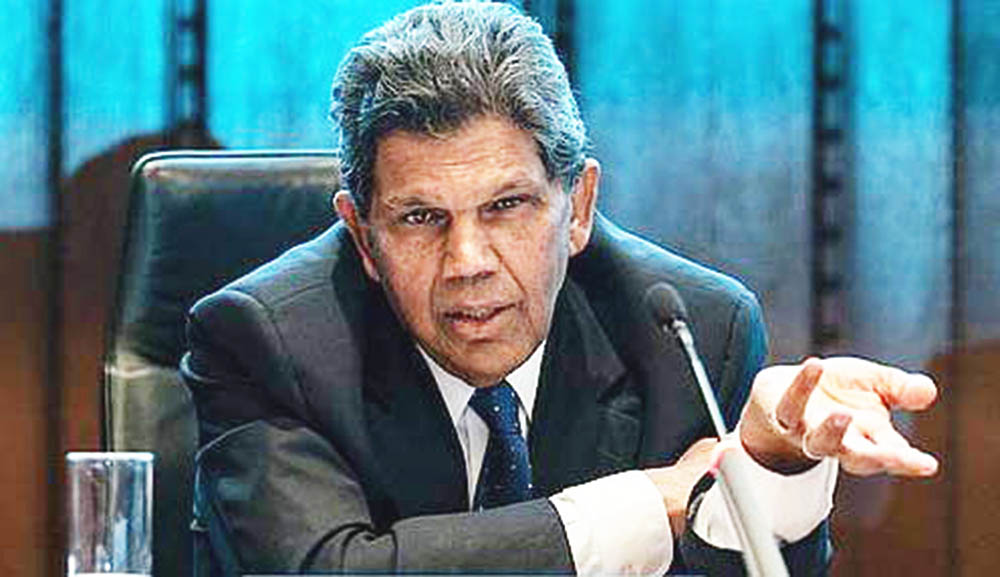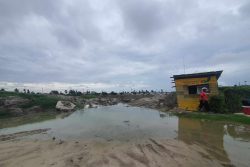By Dr Bertrand Ramcharan
Seventh Chancellor of the University of Guyana
With its newly exploited oil and gas wealth, its youthful, diverse population mirroring the world, and its dynamic young leadership – civil and political, Guyana could be poised for greatness. But, with its lack of political and environmental consensus, it could also be headed for destruction – politically as well as physically. It is the physical, environmental, challenge that we shall address in this piece.
Guyana has, to some extent, been fortunate in the past in the attention its leaders have given to environmental issues. Whether this remains the case is a matter for others to assess. But it would be fair to acknowledge the contribution of then President Jagdeo to global environmental issues. As a seasoned statesman, his leadership on this issue could still be crucial – as indeed could be the leadership of President Ali. Indeed, environmental leadership is strategically important for Guyana and the Caribbean and is a matter of sheer survival for the world at large.
In the Caribbean context, the question is being asked whether the blue seas of the Caribbean will still be picture-postcard beautiful if toxic algal blooms that have already spread from Africa across the Atlantic continue to expand. It is therefore to be hoped that environmental leadership will be accorded the highest priority by Guyana’s helmspersons, especially at a time when Guyana is poised for membership on the UN Security Council. When elected, Guyana could make environmental leadership its signature issue on the Security Council. The stark dangers at hand make this imperative, as we shall see presently.
Peter Frankopan of Oxford University, a pre-eminent global historian of our time, has just written a dramatic new book, The Earth Transformed. An Untold History, which is an environmental history of the world since its creation, tracing the impact of natural phenomena, climate and humankind on the planet. It should be compulsory reading for everyone, especially environmentalists.
Our planet, Frankopan writes, was created 4.6 billion years ago. The first hominins appeared a few million years ago, and the first anatomically modern humans (including Neanderthals) appeared around 500,000 years ago. Since its creation, the Earth has suffered from natural as well as man-made phenomena.
One of the deadliest natural phenomena is what has been termed The Great Dying, which took place 252 million years ago. Its primary cause was an epic volcanic episode in what is now Siberia that produced enormous volumes of magma resulting in the extinction of 96 percent of marine life, three quarters of land animals and all the earth’s forests.
The single most famous moment of large-scale transformation in the past, however, was caused by an asteroid strike that impacted the earth 66 million years ago on the Yucatan peninsula near what is now the town of Chicxulub in Mexico and led to the demise of the dinosaurs. What made this strike so deadly was the size of the asteroid impactor, some twelve kilometres in diameter.
Other shifts in regional and global climates occurred following forty-two enormous eruptions since the demise of the dinosaurs. Asteroid and meteorite strikes also transformed the `natural environment.
Considering survival challenges of the future, Frankopan notes that there are plenty of things that could happen that would pose existential risks for the Earth and its inhabitants. One is the prospect of major warfare, a danger that we are living through at the present time. UN Secretary-General Antonio Guterres said in a speech in August 2022 that the threat of nuclear confrontation had become as high as it was during the Cold War. He underlined that ‘humanity is just one misunderstanding, one miscalculation away from nuclear annihilation’.
Then there are other events that could have severe effects on human life on earth. These include solar winds that have major impact on earth’s magnetosphere, and solar storms that could destroy power-grid transformers. Frankopan writes, “So high are risk-levels that that the USA has formally passed laws to predict and detect space weather events in the form of solar flames, solar energetic particles and geomagnetic disturbances.”
There are also risks of lunar flooding, which NASA expects to occur in the mid-2030s. Attention, the Dear Land of Guyana ! The threat of asteroid impactors, Frankopan points out, is a very real one. But by far the biggest risk to global climate comes from volcanoes. The big underwater volcanic eruption around Tonga on 15 January, 2022 had more explosive force than a hundred simultaneous detonations of the atomic bomb dropped on Hiroshima in 1945. The question is not if a major volcanic eruption will occur, but when.
Alas, human impact on the natural environment has also been substantial and is accelerating to the point that many scientists question the long-term viability of human life on Earth. The natural environment around us, and the climate that supports it, frames our existence. The dangers facing humanity are severe. As much as 40 per cent of the world’s land is now degraded. At current rates, an area the size of South America will be degraded by 2050. At the heart of the problem of today and tomorrow, Frankopan writes, lies the fact that “we are living on the edge of our means and indeed beyond them, reliant on everything to go right and with little margin of error for things to go wrong.”
Emphasizing the challenges of climate change and environmental destruction, Frankopan writes that computer modelling, using powerful modern computers, and highly accurate readings of elevations, suggest that land that is currently home to 300 million people will flood at least once a year by 2050, with Asian populations most heavily affected. As it is, around one billion people already live on land less than ten metres above high-tide levels, and `230 million people live in coastal communities at less than one metre’s elevation above water. Alas, as is well known, the majority of Guyanese live on land below sea level and are at the mercy of the tides and precarious sea-defences.
Citing the International Monetary Fund, Frankopan points out that if steps are not taken to reduce emissions, there could be catastrophic outcomes, including lower agricultural yields, frequent disruption of economic activity, destruction of infrastructure, deterioration of health, and increased prevalence of infectious diseases. According to UNICEF, one billion children – almost half of the world’s children, are already at extremely high risk of the impacts of the climate crisis.
Frankopan concludes his book with the following sobering assessment: “It is easy to answer the question of how the problem of climate change is solved: it will be nature, rather than human action, that ultimately brings net emissions towards zero. It will do so through catastrophic depopulation, whether through hunger, disease or conflict. With fewer of us around to burn fuel, cut down forests and tear minerals from the earth’s crust, the human footprint may become dramatically reduced – and we will move closer to the sustainable paradise of our fantasised past.”
Which brings us to the question posed in the title of this essay: what will it be for Guyana: greatness or destruction? What will be the environmental choices of Guyana’s leaders? Destiny awaits.







